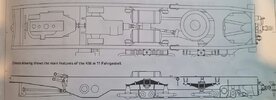A few unexpected hours in the cave last night had me completing a few more steps.
Step 9 has you build up the steering box, shaft, and wheel. The instructions have you attach the wheel to the shaft and then the shaft to the chassis. I would recommend NOT attaching it to the chassis just yet. You still must add wheels and tracks, turn it upside down to add the exhaust etc before then, so it is asking for trouble to add it in this step. This part attachment is also relevant depending on whether you prefer to add the bodywork to the chassis before or after painting. The instructions have you add the bodywork in step 17 so if you go down this route, add both in step 18 BEFORE the firewall (part WD12) goes in. If you want to keep both chassis and bodywork separate then keep both shaft and steering wheel loose until you do finally add the bodywork to the chassis.
Steering shaft and wheel alongside the idler axle assemblies
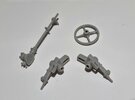
The track wheel axles (parts B29) do not need to be glued in. They are a smooth friction fit even after ridding them of mould seams and give the bonus of articulating all the wheels if you wish. They most definitely won’t fall out so no real need to glue unless you must.
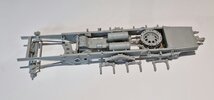
The front axle and steering are constructed in step 10 and here you are instructed not to cement the hubs to the axle beam. Having the wheels free to steer is a nice option. However, the steering linkages do not all rotate UNLESS you pin them. To have a ‘working system’ requires a whole bunch of extra work. Unlike many other kits you do at least get the option to position them in a turned position without too much extra work. Take note though. If you do decide to turn them, this impacts the layout of other steering linkages in step 11.
The process of fitting them is a little tricky as in effect you must line up the holes in both part D19 (D20) and B45 before dropping the pin (B33) in to secure. The tolerances are way too tight IMO so to avoid snapping the pin whilst inserting I would recommend opening the holes in all four parts with a micro drill and making sure the shaft of the pin (B33) is sanded smooth.
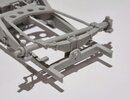
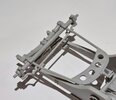
Unfortunately, once built up the hubs are extremely ‘wobbly’! If left this way, both wheels will ‘splay out’ under the weight of the model. There are two ways of correcting this. The first is to simply glue parts D17, D20 and B45 in place once you are happy with the wheel direction, or a thin plastic card shim can be added and drilled to parts B45.
As for the steering linkages there is a diagram in step 11 to show how the steering box linkages attach to both the steering box and the steering rod connecting the driver’s side hub knuckle. This diagram shows the wheels in the straight-ahead position. If you turn the wheels this obviously effects the layout. Confusingly, compared to the arrowed connection drawing of the built-up linkage assembly next to the chassis, the construction stage drawing is drawn upside down!
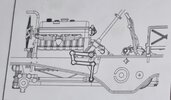
I opted to assemble the steering as per step 10 using a heated blade to ‘squish’ down the tops of the pins on each side of the tie bar (D8) so I could turn both wheels together before gluing them in position. The steering rod connection to the driver’s side hub bar is a strange one. The instructions in step 10 and the diagram in step 11 both show it as attached from below, but it interferes with the tie bar this way! I simply attached it from above.
My wheels are turned to full lock and the linkages adjusted to suit
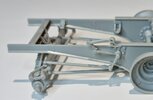
Step 12 has you connecting the roadwheel pairs. This includes the two idler pairs. Fit on mine was not the best due to the overside tab on one side. It kept forcing the pair apart. The tubular connection is nice and straight so its simpler to cut the tabs down or remove them all together. I then glued my idler wheels to their stub axles which I built up in step 8. These are engineered to slot into the back of the rearmost suspension arm plates and will be adjusted in or out to optimise the track sag.
Depending on how you like to construct and paint the wheels will determine how you plan out adding the wheels in step 13. I like to paint my wheels separately, but the interlocking system of wheels makes this process a bit more involved. Leaving the inner and outermost wheels separate is usually the easiest option.
The sprocket housings locate onto the chassis and part B40 on them locates into the gearbox pins behind the hole (we lined the gearbox up with) in the chassis.
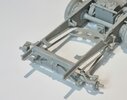
Taking a break from cleaning up wheels I skipped to step 16 and looked at how I could rework the incorrect seat layout in the cab. Trumpeter have opted to add a single bench instead of a separated driver’s seat and added a cut-out on the passenger side. The back rest moulding (part WA3) is two evenly spaced cushions. Looking at Hilary Doyle’s scale drawings in Panzer Tracts No 22-4 both the bench and back cushions are two different sized seats. The driver’s side is smaller, and the back cushion is also a lot thicker. In addition, the drawings show a single enclosed battery box sat against the side panel on the driver’s side and not two exposed batteries side by side like the kit has!
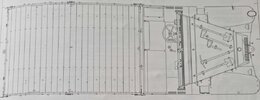
Using the existing back cushion moulding I cut a portion off one side and re-attached it to the other. Using the drawings, I split the one-piece bench into two and filled in the cut-out section. As for the metalwork underneath, I utilised part WB3 to extend the front panel, filled the void and used plastic card to replace the lip and panel top.
I have yet to add plastic card to make the drivers back rest thicker, blend in the back cushion and the bench to simulate two separate cushions.
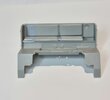

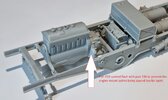
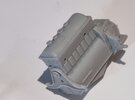
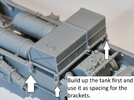
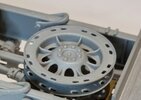
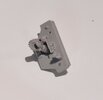
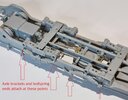
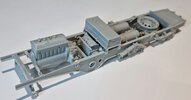
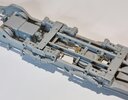

 What a numptie
What a numptie










